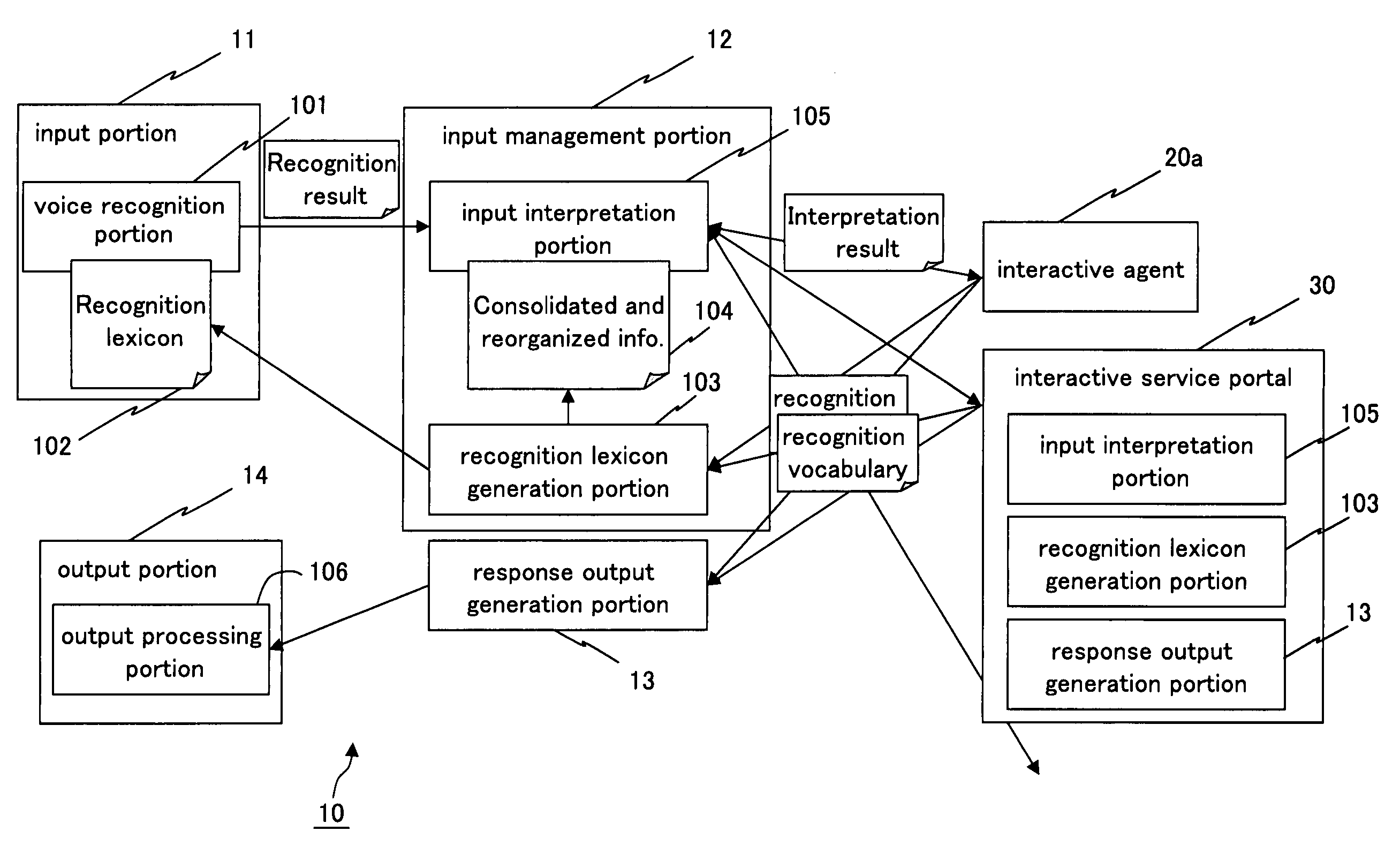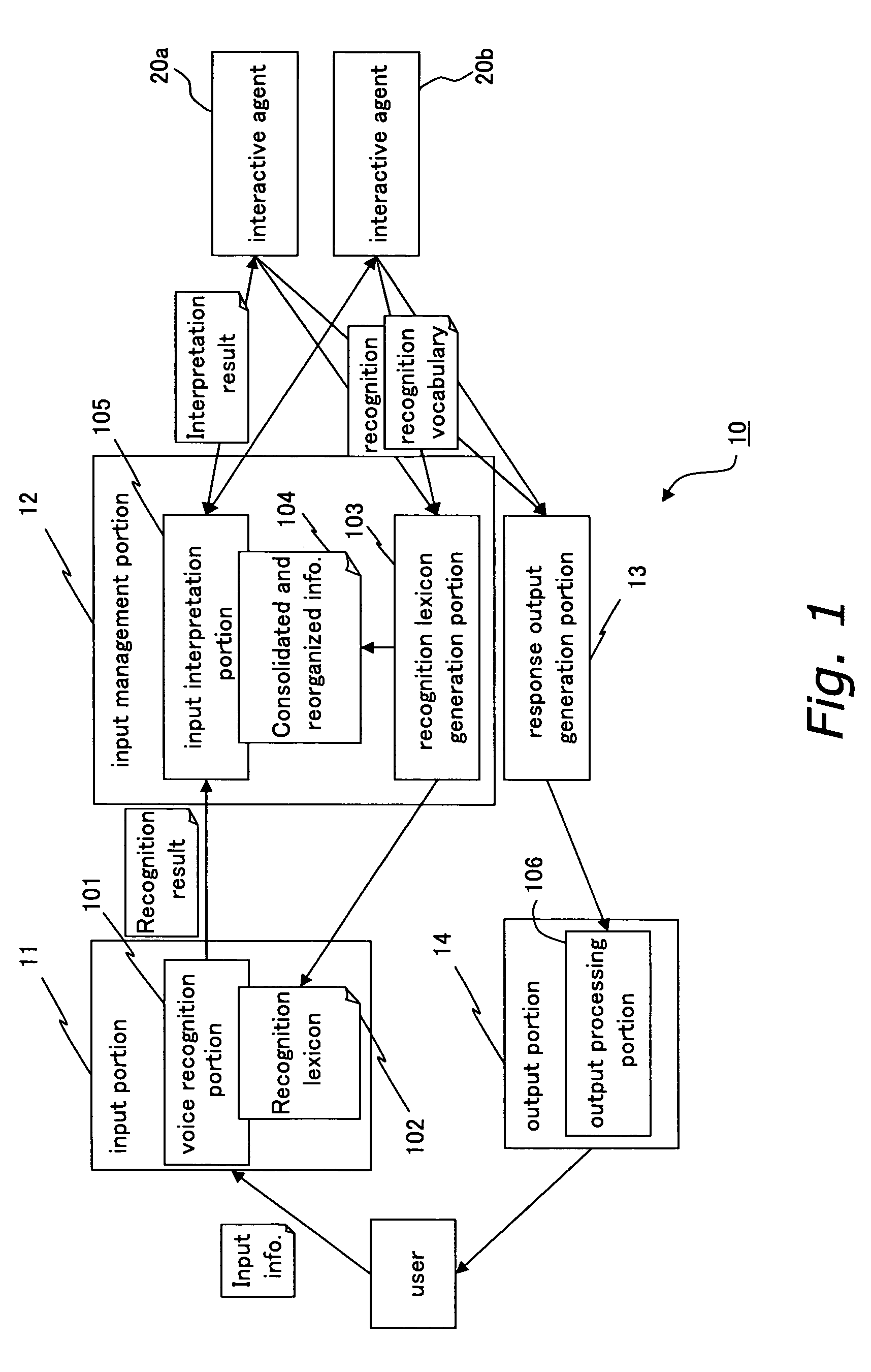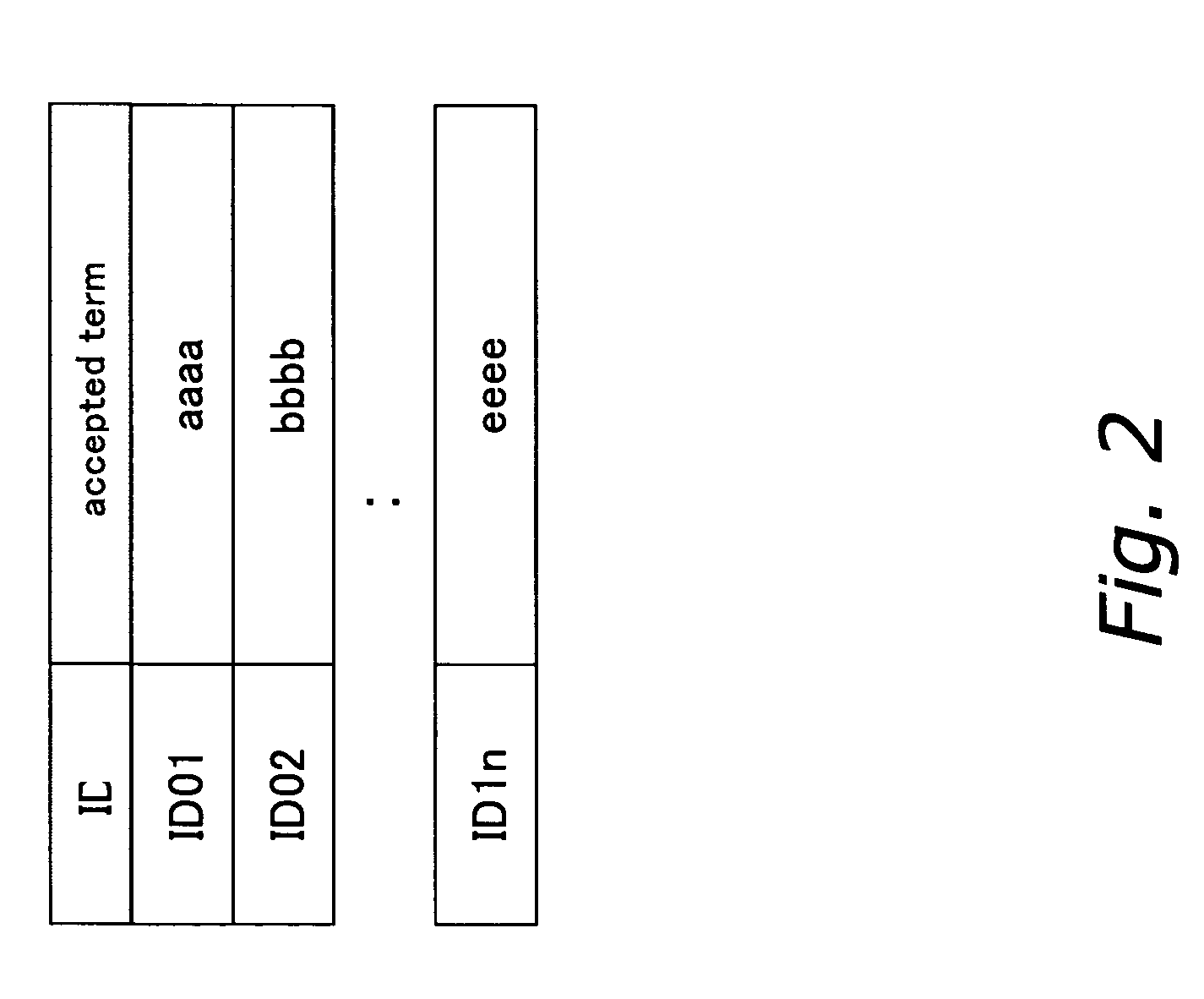Interactive control system and method
a control system and control method technology, applied in the field of voice interaction technology and voice recognition technology, can solve the problems of reducing the recognition rate of input information
- Summary
- Abstract
- Description
- Claims
- Application Information
AI Technical Summary
Benefits of technology
Problems solved by technology
Method used
Image
Examples
first embodiment
Overall Configuration
[0049]FIG. 1 is a diagram showing the configuration of an interactive control system in accordance with a first embodiment of the present invention. In this embodiment, a voice interaction is taken as an example. The interactive control system 10 is connected to a plurality of interactive agents 20a and 20b, and includes an input portion 11, an input management portion 12, a response output generation portion 13 and an output portion 14.
[0050]Referring to a recognition lexicon 102, the input portion 11 interprets input information that has been input by a user. The input portion 11 includes a voice recognition portion 101 and a recognition lexicon 102. The voice recognition portion 101 accepts voice information from the user. The recognition lexicon 102 is an aggregation of terms that the interactive control system can recognize. After the interaction has started, the recognition lexicon 102 is generated for each interaction by the input management portion 12. T...
second embodiment
[0084]FIG. 7 is a functional diagram of the recognition lexicon generation portion 103 of an interactive control system according to a second embodiment. The interactive control system according to the second embodiment has a similar configuration as the one in FIG. 1. However, this recognition lexicon generation portion 103 generates the recognition lexicon 102 by selecting accepted terms within a range that does not exceed a predetermined upper limit of terms constituting the recognition lexicon 102.
[0085]This is explained in more detail with reference to FIG. 7. The consolidation processing portion 1031 of the recognition lexicon generation portion 103 obtains a vocabulary 1032 that has been consolidated such that there are no duplicate terms among the accepted terms from the interactive agents. Moreover, consolidated and reorganized information 104 is generated. A restriction condition buffer 1035 stores a restriction condition for the generation of the recognition lexicon 102. ...
third embodiment
[0089]FIG. 8 is a functional diagram of the recognition lexicon generation portion 103 of an interactive control system according to a third embodiment. The interactive control system according to the third embodiment has a similar configuration as the one in FIG. 1. However, in addition to the functionality of the second embodiment, this recognition lexicon generation portion 103 generates the recognition lexicon 102 by further obtaining the importance of each accepted term from the interactive agents and selecting accepted terms depending on their importance.
[0090]This is explained in more detail with reference to FIG. 8. The consolidation processing portion 1031 of the recognition lexicon generation portion 103 consolidates the accepted terms from the interactive agents, and generates the consolidated and reorganized information 104. The restriction condition buffer 1035 stores restriction conditions for generating the recognition lexicon 102. In this example, the following Restr...
PUM
 Login to View More
Login to View More Abstract
Description
Claims
Application Information
 Login to View More
Login to View More - R&D
- Intellectual Property
- Life Sciences
- Materials
- Tech Scout
- Unparalleled Data Quality
- Higher Quality Content
- 60% Fewer Hallucinations
Browse by: Latest US Patents, China's latest patents, Technical Efficacy Thesaurus, Application Domain, Technology Topic, Popular Technical Reports.
© 2025 PatSnap. All rights reserved.Legal|Privacy policy|Modern Slavery Act Transparency Statement|Sitemap|About US| Contact US: help@patsnap.com



